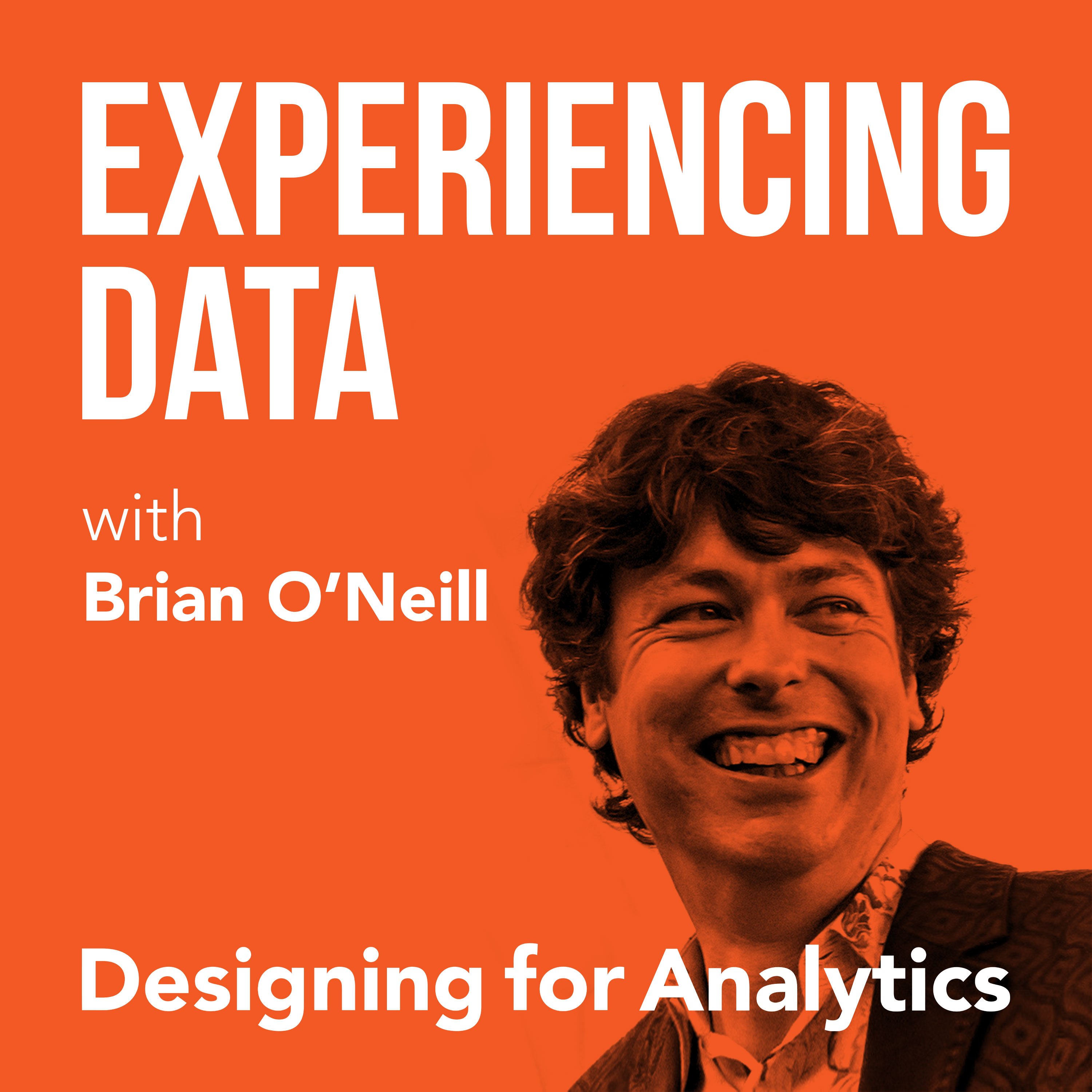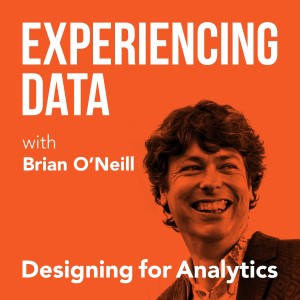

153.7K
Downloads
184
Episodes
Is the value of your enterprise analytics SAAS or AI product not obvious through it’s UI/UX? Got the data and ML models right...but user adoption of your dashboards and UI isn’t what you hoped it would be?
While it is easier than ever to create AI and analytics solutions from a technology perspective, do you find as a founder or product leader that getting users to use and buyers to buy seems harder than it should be?
If you lead an internal enterprise data team, have you heard that a ”data product” approach can help—but you’re concerned it’s all hype?
My name is Brian T. O’Neill, and on Experiencing Data—one of the top 2% of podcasts in the world—I share the stories of leaders who are leveraging product and UX design to make SAAS analytics, AI applications, and internal data products indispensable to their customers. After all, you can’t create business value with data if the humans in the loop can’t or won’t use your solutions.
Every 2 weeks, I release interviews with experts and impressive people I’ve met who are doing interesting work at the intersection of enterprise software product management, UX design, AI and analytics—work that you need to hear about and from whom I hope you can borrow strategies.
I also occasionally record solo episodes on applying UI/UX design strategies to data products—so you and your team can unlock financial value by making your users’ and customers’ lives better.
Hashtag: #ExperiencingData.
JOIN MY INSIGHTS LIST FOR 1-PAGE EPISODE SUMMARIES, TRANSCRIPTS, AND FREE UX STRATEGY TIPS
https://designingforanalytics.com/ed
ABOUT THE HOST, BRIAN T. O’NEILL:
https://designingforanalytics.com/bio/
Episodes

Tuesday Feb 04, 2025
162 - Beyond UI: Designing User Experiences for LLM and GenAI-Based Products
Tuesday Feb 04, 2025
Tuesday Feb 04, 2025
I’m doing things a bit differently for this episode of Experiencing Data. For the first time on the show, I’m hosting a panel discussion. I’m joined by Thomson Reuters’s Simon Landry, Sumo Logic’s Greg Nudelman, and Google’s Paz Perez to chat about how we design user experiences that improve people’s lives and create business impact when we expose LLM capabilities to our users.
With the rise of AI, there are a lot of opportunities for innovation, but there are also many challenges—and frankly, my feeling is that a lot of these capabilities right now are making things worse for users, not better. We’re looking at a range of topics such as the pros and cons of AI-first thinking, collaboration between UX designers and ML engineers, and the necessity of diversifying design teams when integrating AI and LLMs into b2b products.
Highlights/ Skip to
- Thoughts on how the current state of LLMs implementations and its impact on user experience (1:51)
- The problems that can come with the "AI-first" design philosophy (7:58)
- Should a company's design resources be spent on go toward AI development? (17:20)
- How designers can navigate "fuzzy experiences” (21:28)
- Why you need to narrow and clearly define the problems you’re trying to solve when building LLMs products (27:35)
- Why diversity matters in your design and research teams when building LLMs (31:56)
- Where you can find more from Paz, Greg, and Simon (40:43)
Quotes from Today’s Episode
- “ [AI] will connect the dots. It will argue pro, it will argue against, it will create evidence supporting and refuting, so it’s really up to us to kind of drive this. If we understand the capabilities, then it is an almost limitless field of possibility. And these things are taught, and it’s a fundamentally different approach to how we build user interfaces. They’re no longer completely deterministic. They’re also extremely personalized to the point where it’s ridiculous.” - Greg Nudelman (12:47)
- “ To put an LLM into a product means that there’s a non-zero chance your user is going to have a [negative] experience and no longer be your customer. That is a giant reputational risk, and there’s also a financial cost associated with running these models. I think we need to take more of a service design lens when it comes to [designing our products with AI] and ask what is the thing somebody wants to do… not on my website, but in their lives? What brings them to my [product]? How can I imagine a different world that leverages these capabilities to help them do their job? Because what [designers] are competing against is [a customer workflow] that probably worked well enough.” - Simon Landry (15:41)
- “ When we go general availability (GA) with a product, that traditionally means [designers] have done all the research, got everything perfect, and it’s all great, right? Today, GA is a starting gun. We don’t know [if the product is working] unless we [seek out user feedback]. A massive research method is needed. [We need qualitative research] like sitting down with the customer and watching them use the product to really understand what is happening[…] but you also need to collect data. What are they typing in? What are they getting back? Is somebody who’s typing in this type of question always having a short interaction? Let’s dig into it with rapid, iterative testing and evaluation, so that we can update our model and then move forward. Launching a product these days means the starting guns have been fired. Put the research to work to figure out the next step.” - (23:29) Greg Nudelman
- “ I think that having diversity on your design team (i.e. gender, level of experience, etc.) is critical. We’ve already seen some terrible outcomes. Multiple examples where an LLM is crafting horrendous emails, introductions, and so on. This is exactly why UXers need to get involved [with building LLMs]. This is why diversity in UX and on your tech team that deals with AI is so valuable. Number one piece of advice: get some researchers. Number two: make sure your team is diverse.” - Greg Nudelman (32:39)
- “ It’s extremely important to have UX talks with researchers, content designers, and data teams. It’s important to understand what a user is trying to do, the context [of their decisions], and the intention. [Designers] need to help [the data team] understand the types of data and prompts being used to train models. Those things are better when they’re written and thought of by [designers] who understand where the user is coming from. [Design teams working with data teams] are getting much better results than the [teams] that are working in a vacuum.” - Paz Perez (35:19)
No comments yet. Be the first to say something!